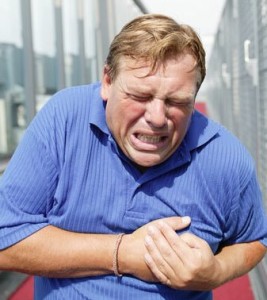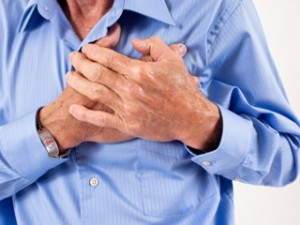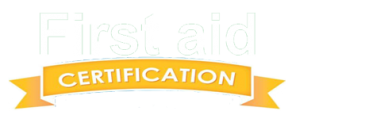Heart attacks are often confused with cardiac arrests but these are two very different things.
A heart attack is defined as an obstruction to the blood supply to the heart muscle, for example, a clot in a coronary artery. This means oxygen can’t get to the heart and therefore the tissue in the heart starts to die.
However, a cardiac arrest is a malfunction in the electrical activity in the heart, which causes it to have an abnormal rhythm or stop. This means blood and oxygen is not able to be pumped around the body and the person is effectively dead. However, with rapid and effective First Aid, the person can sometimes be revived, although survival rates are low.
HEART ATTACK
 Firstly, you must learn to recognise the symptoms of a heart attack. Often patients have persistent, vice-like central chest pain which can spread to the jaw and down one or both arms. Some complain of breathlessness and discomfort in the upper abdomen like indigestion. Patients appear ashen, sometimes with blue lips, and clammy or profuse sweating. When assessed, the patients pulse will be rapid, weak or irregular.
Firstly, you must learn to recognise the symptoms of a heart attack. Often patients have persistent, vice-like central chest pain which can spread to the jaw and down one or both arms. Some complain of breathlessness and discomfort in the upper abdomen like indigestion. Patients appear ashen, sometimes with blue lips, and clammy or profuse sweating. When assessed, the patients pulse will be rapid, weak or irregular.
St Mark James Training teaches that the patient should be made as comfortable as possible in order to ease the strain on the heart. A sitting position with the patients’ knees bent is recommended in First Aid Classes.
If available, St Mark James Training states giving the patient aspirin (300mg) to chew is best treatment, if the patient is fully conscious. Any angina medication the patient may have could also be helpful to ease pain and assist the patient to rest whilst waiting for the emergency services.
Depending on the extent of the damage, a heart attack can lead to a cardiac arrest, although some people can recover from heart attacks completely. This is where it is useful to have First Aid Certification so you can help someone in this situation and give them the best chance at recovery. First Aid from the St Mark James also teaches CPR (cardio-pulmonary resuscitation).
If the patient becomes unconscious, the First Aider needs to open the airway and check the patients’ breathing, and be prepared to start chest compressions and rescue breaths if necessary.
CARDIAC ARREST
 In a cardiac arrest, the patient will be unconscious, not breathing and have no pulse. St Mark James Training teaches you to check for a response by speaking loud and clear and shaking the patients shoulders. If there is no response, check the patients’ breathing. Open the airway by placing one hand on their forehead and using your fingers under their chin to tilt their head back. You can then listen and feel for their breathing by putting your ear by their mouth and look at their chest for any movement. If they are not breathing, ring the emergency services and start chest compressions.
In a cardiac arrest, the patient will be unconscious, not breathing and have no pulse. St Mark James Training teaches you to check for a response by speaking loud and clear and shaking the patients shoulders. If there is no response, check the patients’ breathing. Open the airway by placing one hand on their forehead and using your fingers under their chin to tilt their head back. You can then listen and feel for their breathing by putting your ear by their mouth and look at their chest for any movement. If they are not breathing, ring the emergency services and start chest compressions.
Automated External Defibrillators (AED) are available in many public areas and can be used to correct the abnormal heart rhythm and restart the heart. Chest compressions should be continued until the defibrillator is prepared and attached.
First Aid and CPR classes give informative and more detailed advice and instructions to equip First Aiders with the knowledge to make a difference in life threatening situations.
